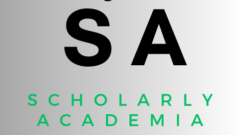COURSE:
NR546 – Advanced Pharmacology: Psychopharmacology
Preparing the Assignment
Follow these guidelines when completing each component of the assignment. Contact your course faculty if you have questions.
General Instructions
Download the Week 7 ADHD Medication Table. and complete the required information using the template.
Include the following sections (detailed criteria listed below and in the grading rubric)
- For each medication listed, complete the following:
- Provide indication, starting dose target symptoms, and affected neurotransmitters.
- Include half-life and CYP 450 enzyme information.
- List notable side effects and precautions.
- Link notable side effects to the associated pathway or neurotransmitter.
Submit your completed medication table to the Week 5 dropbox.
Solution
| Drug Name
(include if IR, XR, ODT, LA)
|
Indication (include approved ages)
Neurotransmitter(s) Affected Target Symptoms |
Short-acting, intermediate-acting or long-acting.
Duration of action, peak (if noted) |
Notable side effects /Patient education instructions |
| Methylphenidate (D/L)
(Concerta, Ritalin) |
A dopamine or norepinephrine inhibitor and releaser (DN-RIRe) stimulant. The FDA has approved for use in both children and adults in the treatment of ADHD, with specific age ranges varying between different formulations, and also for narcolepsy. Also, it is prescribed for the treatment of depression that does not respond to the medication. Methylphenidate boosts dopamine and norepinephrine in specific parts of the brain, such as dorsolateral prefrontal cortex and medial prefrontal cortex. Its main symptoms are difficulties with concentration, attention span, motor hyperactivity, impulsiveness, fatigue (physical and mental), sleepiness during the day, and depression. | Ritalin IM tablets are supplied in strengths of 5 mg, 10 mg and 20 mg. Ritalin LA offers up to 8 hours of sustained action, while Ritalin SR has a duration of action lasting 4 to 6 hours. Both the immediate-release (IR) and the extended-release (XR) formulations are available. The drug also comes in a bead form, thus, making it easier to be given to children who may have difficulty swallowing pills. Concerta SR provides extended release up to 12 hours. A typical initial daily dose for Concerta is 18 mg in the morning. Concerta is a biphasic drug, having immediate and delayed release that takes the duration of action up to 12 hours with reduced early peak. The average half-life of Ritalin in adults is approximately 3.5 hours, and the effect of metabolism is limited. In children, half-life averages approximately 2.5 hours. | Side effects
The medication’s most common side effects include insomnia, headache, worsening of tics, nervousness, irritability, overstimulation, tremor, dizziness, anorexia, nausea, abdominal pain, weight loss, and disputed norm growth in children. Vision may be blurry, too. Though it is rare, serious side effects such as priapism, psychotic episodes, seizures, palpitations, hypertension, neuroleptic malignant syndrome, hypomania and suicidal ideation have been linked with this medication, along with possible cardiovascular effects.
Patient education Before treatment is start, the assessment for the presence of a cardiac disease is important, and a pre-treatment electrocardiogram is recommended for children. Periodic complete blood counts and platelet counts are mandatory even for a short-term therapy, and regular blood pressure monitoring is necessary due to the rare occurrence of leukopenia or anemia. In children, monitoring of weight and height should also take place. Medication is contraindicated during breastfeeding because of the chance of harm to the newborn. |
……………………………………..$5
